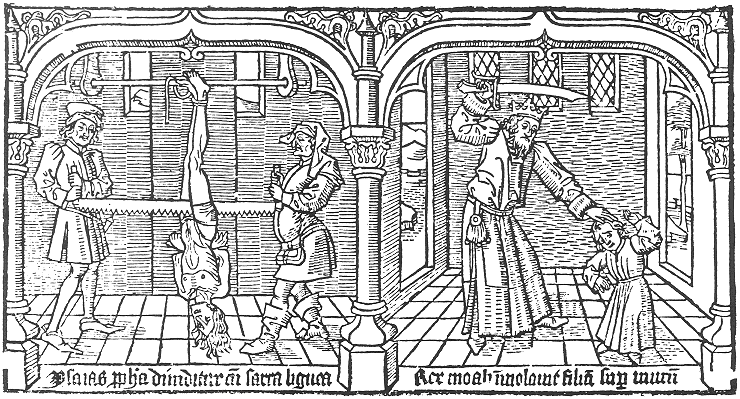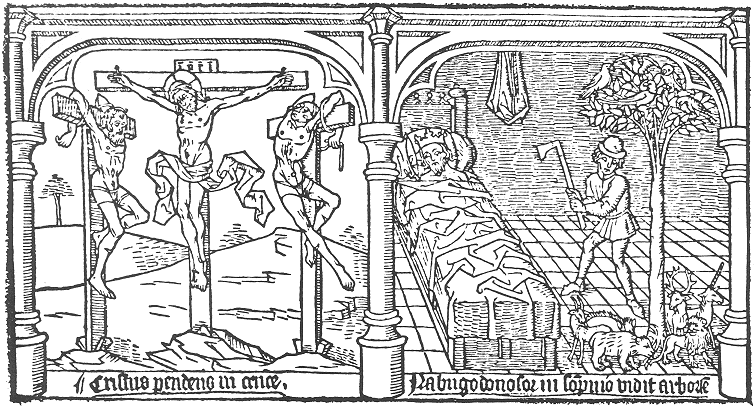Chapter XXIII
a. Xpus crucifixus mortem suam figuris predixit
(Christ predicted in figures his own death by crucifixion)
Christ is being nailed to the cross by three kneeling men, one for each hand and one for the feet. In some manuscript versions, a blacksmith is seen forging the nails of the Passion. This may show the influence of the blockbook in which, adjacent to the Crucifixion, the forge of Tubalcain is shown as a prefiguration. The nailing to the cross is not described in the Bible.
b. Inventores artis ferrarie et melodiarum
(The inventors of the arts of smithery and melody)
Tubalcain was the ancestor of all who worked in metal, and Jubal was the father of all those who played the harp and the organ. The Speculum text states that while Tubalcain made sound resonate by hammering in his forge, Jubal made a melody of the sound. This prefigures the prayer of Jesus for his enemies at the moment of his Crucifixion. Here they are shown at work hammering on an anvil. The figure in the center may be their father, Lamech.
Genesis IV, 21–22

c. Ysaias propheta dividitur cum sarra lignea
(The prophet Isaiah is cut in half by a wood-saw)
This legendary account of Isaiah's death is drawn from Petrus Comestor. According to the text of the Speculum , the division of Isaiah into two parts prefigures the separation of Jesus' soul from his body.
d. Rex moab immolavit filium super murum
(King Moab sacrificed his son on the walls)
King Moab is shown with a raised sword about to sacrifice his son in order to save the inhabitants of his city from famine during a siege. Although the biblical and Speculum texts describe the sacrifice of the child on the walls of the city, it takes place here in an interior.
II Kings III, 27
(IV Kings)
